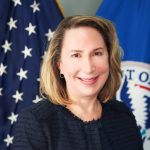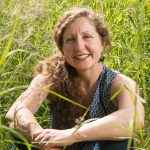Draft Tongass plan would boost CO2 emissions
Reprinted with permission from E&E News
Amanda Reilly, E&E reporter
Published: Wednesday, January 13, 2016
A draft management plan for Alaska’s Tongass National Forest could cause annual releases equivalent to 4 million cars’ worth of carbon dioxide emissions over the next century, warns a new study.
The study by the Geos Institute, a conservation nonprofit organization studying forest systems and climate change, cautions that the plan’s emissions would run counter to the recent international agreement to address climate change.
The Tongass National Forest unveiled the draft plan in November to shift the forest from predominantly old-growth logging to predominantly young-growth logging. A unanimous recommendation by the Tongass Advisory Committee, which is made up of the timber industry, conservation groups, Alaska Natives and local government, formed the basis for the plan (E&ENews PM, Nov. 20, 2015).
The author of the new report, Geos chief scientist Dominick DellaSala, said he set out to determine whether the plan for the 16.8-million-acre forest was consistent with the recent international climate deal crafted in Paris, as well as with the Obama administration’s own climate change policies.
The Geos Institute report, which used published estimates of carbon stored in the Tongass, takes issue with the Forest Service’s plan to continue to allow old-growth logging as it transitions to young-growth logging. The plan calls for a transition period because of concerns about the salability of young growth.
Tongass Forest Supervisor Earl Stewart said that the changes would make the Tongass forest management program “more ecologically, socially and economically sustainable.”
But along with warning that the draft plan undermines the Paris climate agreement, the report from the Geos Institute says that the plan also runs counter to draft guidelines from the Council on Environmental Quality directing agencies to limit carbon dioxide emissions. The plan would release emissions that are 175 times higher than the CEQ guidelines, according to the report.
Geos used the report to push for a conservation alternative to the draft plan that would accelerate the transition to young-growth logging.
“The Obama Administration is using a double standard of paying other countries not to destroy tropical rainforests, while logging the Tongass rainforest,” DellaSala said in a statement. “We need bold action to save the Tongass and its climate now, not baby steps that drag transition through years of controversial old-growth logging in one of the world’s most important temperate rainforests.”
Tongass Logging Plan At Odds With Paris Climate Change Agreements
For Immediate Release on January 11, 2016
Contacts: Dominick A. DellaSala: 541-621-7223 (cell); Jim Furnish: 240-271-1650
Ashland, OR – a logging plan on the Tongass National Forest in southeast Alaska conflicts with President Obama’s commitments to the Paris climate change agreements reached in December.
In November, the U.S. Forest Service issued a Draft Environmental Impact Statement to transition the Tongass out of old-growth logging but the agency plans to continue logging carbon-rich, old-growth rainforests as it slowly transitions logging to younger trees.
When rainforests are logged, most of the carbon stored in dense foliage, old trees, and soils is emitted as carbon dioxide pollution, the main culprit in heating the planet. A new report by the Ashland-based Geos Institute, a climate change organization, shows proposed would release global warming pollution equivalent to the emissions from 4 million vehicles annually at a time when the nation is striving to cut emissions.
Tongass rainforest is Alaska’s first line of climate change defense
 Geos Institute released a new report demonstrating the importance of the Tongass rainforest in southeast Alaska as the State’s first line of climate change defense. Old-growth rainforests on the Tongass store more atmospheric carbon than any national forest in the country and therefore act as a carbon “sink.” The recent Paris climate change agreements called on nations to enhance and maintain forests as a carbon sink. Continued logging on the Tongass releases greenhouse gas emissions that will further place at risk Alaska’s climate and world-class wildlife and fisheries.
Geos Institute released a new report demonstrating the importance of the Tongass rainforest in southeast Alaska as the State’s first line of climate change defense. Old-growth rainforests on the Tongass store more atmospheric carbon than any national forest in the country and therefore act as a carbon “sink.” The recent Paris climate change agreements called on nations to enhance and maintain forests as a carbon sink. Continued logging on the Tongass releases greenhouse gas emissions that will further place at risk Alaska’s climate and world-class wildlife and fisheries.
- Emissions calculations
- KTOO article about the Tongass as a climate refuge
- KTOO – Juneau: Environmentalists say Tongass plan doesn’t act fast enough
Tongass rainforest is Alaska’s first line of climate change defense
 Geos Institute released a new report demonstrating the importance of the Tongass rainforest in southeast Alaska as the State’s first line of climate change defense. Old-growth rainforests on the Tongass store more atmospheric carbon than any national forest in the country and therefore act as a carbon “sink.” The recent Paris climate change agreements called on nations to enhance and maintain forests as a carbon sink. Continued logging on the Tongass releases greenhouse gas emissions that will further place at risk Alaska’s climate and world-class wildlife and fisheries.
Geos Institute released a new report demonstrating the importance of the Tongass rainforest in southeast Alaska as the State’s first line of climate change defense. Old-growth rainforests on the Tongass store more atmospheric carbon than any national forest in the country and therefore act as a carbon “sink.” The recent Paris climate change agreements called on nations to enhance and maintain forests as a carbon sink. Continued logging on the Tongass releases greenhouse gas emissions that will further place at risk Alaska’s climate and world-class wildlife and fisheries.
- Emissions calculations
- Alaska Public Media: Environmentalists say Tongass plan doesn’t act fast enough (Jan 2016)
- KTOO article about the Tongass as a climate refuge (Aug 2015)
- KTOO article says second growth logging in the Tongass can start now (Oct 2014)
Primary (unlogged) forests hold keys to lessening global warming impacts
Only about one-third of the world’s forests remain as intact primary forests with no roads or logging having taken place. Scientists have long recognized the unique values these forests provide including unmatched biodiversity, clean water, and, more recently, climate benefits. Geos Institute was part of an international team of scientists and conservation groups calling on countries, including the USA, to protect their dwindling primary forests as part of the historic climate change agreements negotiated this December in Paris.
Read the full article.
 |
 |
| Tongass rainforest – primary temperate rainforests on the Tongass National Forest in southeast Alaska sequester (absorb) the equivalent of about 8% of the annual US greenhouse gas emissions. No other forest in the nation sequesters and stores more carbon. Geos Institute works to preserve these rainforests for their climate and biodiversity benefits. | Tropical rainforest, Australia – tropical rainforests are a global carbon “sink,” absorbing atmospheric carbon through photosynthesis and storing it in long-lived trees, dense foliage, and soils. Geos Institute is a member of the steering committee of “IntAct,” an international effort to protect the world’s primary forests. Photo credit: Dominick DellaSala |
Over 200 scientists request that the Administration accelerate transition out of old-growth logging
Seven of the nation’s top scientific societies and 200 distinguished climate and natural resource scientists are urging the USDA and the Obama Administration to speed up its transition out of old-growth logging on the Tongass National Forest. The large trees, productive soils, and dense foliage on the Tongass store ten times more carbon than any other national forest. When these rainforests are logged, most of the stored carbon is released as carbon dioxide pollution, contributing to global warming in Alaska and worldwide.
According to Dominick DellaSala, “Quickly transitioning the Tongass rainforest out of clearcutting old-growth forests would bring certainty to the timber industry and secure the legacy of rainforest benefits for the American people.
Press Release:
Phase out of Tongass old-growth logging
A 2014 study of second growth timber on the Tongass National Forest in southeast Alaska shows that the U.S. Forest Service can transition out of old growth logging in 5 years, and shift timber sales into young growth located in previously logged and roaded areas.
As Dominick DellaSala stated, “We have a once-in-a lifetime opportunity to stop the needless logging of old growth in one of the world’s last relatively intact rainforests, with the added benefit of keeping carbon in the forest and out of the atmosphere.”
Press Releases:
Scientists Call on Pres. Obama to Include Tongass in Climate Change Talks
Contact: Dominick DellaSala (541/621-7223; dominick@geosinstitute.org)
Ashland, OR – Alaska’s Tongass rainforest may fair better in a changing climate than more southerly rainforest locales, according to a new study published in an online reference module “Earth Systems and Environmental Sciences” by Elsevier, a world-leading provider of scientific, technical and medical information products and services.
The release of the study coincides with President Barack Obama’s visit with the Arctic Council in Anchorage in advance of the United Nations climate talks. It follows a letter sent in April 2015 to the White House by hundreds of scientists calling on President Obama to speed the transition out of old-growth logging on the Tongass to preserve the rainforest’s unique climate and wildlife benefits.
Scientists Warn Climate Change is Threatening World’s Most Expansive Temperate Rainforests
For Immediate Release on February 26, 2015
Contact: Dominick A. DellaSala, Ph.D.; Cell: 541-621-7223
Ashland, Oregon – International climate change and rainforest experts warned that without drastic and immediate cuts to greenhouse gas emissions and new forest protections, the world’s most expansive stretch of temperate rainforests from Alaska to the coast redwoods will experience irreparable losses.
Using global climate models, researchers assessed changes in temperature and precipitation from recent to future climatic conditions projected toward the end of the century if emissions from burning fossil fuels and deforestation continue to rise.
Scientists Ask President Obama to Save Tongass Rainforest
For immediate release on January 20, 2015
Contact: Dominick DellaSala, Chief Scientist and President; 541.482.4459 x302; 541.621.7223 (cell); dominick@geosinstitute.org
Ashland, Oregon- Seven of the nation’s top scientific societies have joined over 200 distinguished climate and natural resource scientists to urge the Obama Administration to speed up its transition out of old-growth logging on the Tongass National Forest in southeast Alaska.
USDA Secretary Tom Vilsack announced in July 2013 that a transition out of old-growth logging and into logging second growth (forests originally logged in the 1950s that have since reforested) would commence over time. The Forest Service is amending the Tongass National Forest Land Management Plan, with a draft due this August. Unfortunately, the agency continues to support controversial old-growth sales at levels not seen since the early 1990s, despite independent analyses showing second growth will soon be available to replace old growth timber.
The scientific societies calling for an end to old-growth logging on the Tongass National Forest (the only national forest still clearcutting old growth) include the American Fisheries Society, American Ornithologists Union, American Society of Mammalogists, Ecological Society of America, Pacific Seabird Group, Society for Conservation Biology, and The Wildlife Society.
Latest News
Stay Updated!
Sign up to stay updated on our current initiatives and receive information you can use to build resilience in your community.


 Samantha Medlock is President of Climate Risk Advisors, helping communities and organizations advance equity, sustainability, and resilience. Her career began chasing floods as a local official in Texas Flash Flood Alley—a hands-on experience that still shapes her approach to climate and disaster risk management.
Samantha Medlock is President of Climate Risk Advisors, helping communities and organizations advance equity, sustainability, and resilience. Her career began chasing floods as a local official in Texas Flash Flood Alley—a hands-on experience that still shapes her approach to climate and disaster risk management.
 Arsum is the Senior Adaptation and Coastal Resilience Specialist for the National Wildlife Federation’s Southcentral Region. In this role, she advances climate adaptation efforts, with a focus on nature-based approaches to address the impacts of climate change and extreme events across the Gulf region. She has authored and co-authored numerous publications on climate impact assessments and adaptation solutions. Additionally, she regularly participates in state-based coastal resilience and hazard mitigation planning across the Gulf, collaborating with regional and local stakeholders.
Arsum is the Senior Adaptation and Coastal Resilience Specialist for the National Wildlife Federation’s Southcentral Region. In this role, she advances climate adaptation efforts, with a focus on nature-based approaches to address the impacts of climate change and extreme events across the Gulf region. She has authored and co-authored numerous publications on climate impact assessments and adaptation solutions. Additionally, she regularly participates in state-based coastal resilience and hazard mitigation planning across the Gulf, collaborating with regional and local stakeholders. Frank is the former President of the Reinsurance Association of America. Frank currently serves on the Advisory Board of the OECD’s International Network for the Financial Management of Large-Scale Disasters, the RAND Center on Catastrophic Risk Management and Compensation, and the University of Cincinnati’s Carl H. Lindner III Center for Insurance and Risk Management Advisory Board.
Frank is the former President of the Reinsurance Association of America. Frank currently serves on the Advisory Board of the OECD’s International Network for the Financial Management of Large-Scale Disasters, the RAND Center on Catastrophic Risk Management and Compensation, and the University of Cincinnati’s Carl H. Lindner III Center for Insurance and Risk Management Advisory Board. Jim is a multilingual world traveler. Based in Bavaria during the 1970s, Jim spent most of this period in India, Afghanistan and Nepal, where he founded and operated a charitable medical clinic serving Tibetan Refugees. He settled in Oregon in 1983 on a forested ranch in the Umpqua National Forest.
Jim is a multilingual world traveler. Based in Bavaria during the 1970s, Jim spent most of this period in India, Afghanistan and Nepal, where he founded and operated a charitable medical clinic serving Tibetan Refugees. He settled in Oregon in 1983 on a forested ranch in the Umpqua National Forest. Dr. Micah Hahn is an Associate Professor of Environmental Health in the Institute for Circumpolar Health Studies at the University of Alaska-Anchorage. She received her joint PhD in Epidemiology / Environment and Resources from the University of Wisconsin-Madison and her MPH in Global Environmental Health from Emory University. Subsequently, she was a postdoctoral fellow for the CDC Climate and Health Program, and in this position worked collaboratively with the CDC Division of Vector-borne Diseases and the National Center for Atmospheric Research. Her research focuses on understanding the health impacts of climate change and working with communities to develop locally-relevant adaptation and resilience-building strategies. Dr. Hahn is also on the Management Team of the Alaska Climate Adaptation Science Center.
Dr. Micah Hahn is an Associate Professor of Environmental Health in the Institute for Circumpolar Health Studies at the University of Alaska-Anchorage. She received her joint PhD in Epidemiology / Environment and Resources from the University of Wisconsin-Madison and her MPH in Global Environmental Health from Emory University. Subsequently, she was a postdoctoral fellow for the CDC Climate and Health Program, and in this position worked collaboratively with the CDC Division of Vector-borne Diseases and the National Center for Atmospheric Research. Her research focuses on understanding the health impacts of climate change and working with communities to develop locally-relevant adaptation and resilience-building strategies. Dr. Hahn is also on the Management Team of the Alaska Climate Adaptation Science Center. Michael is a former Founding Principal of Resilient Cities Catalyst, a global non-profit helping cities and their partners tackle their toughest challenges. He is currently the Executive Director of Climate Resilience Academy at the University of Miami.
Michael is a former Founding Principal of Resilient Cities Catalyst, a global non-profit helping cities and their partners tackle their toughest challenges. He is currently the Executive Director of Climate Resilience Academy at the University of Miami. Dr. Quintus Jett is a consultant, educator, and strategist for public causes. He has a doctorate in Organizations & Management from Stanford University, and a two-decade faculty career which spans schools, departments, and programs of business, engineering, liberal studies, divinity, and public and nonprofit management. Following Hurricane Katrina in 2005, Dr. Jett launched a volunteer project in New Orleans, which enlisted residents, students from over a dozen colleges and universities, and hundreds of others to field map the city’s Gentilly district, Lower Ninth Ward, and New Orleans East. Dr. Jett is an innovator in higher education, bridging the divide between academic research and the other priorities of the modern university, including student access and diversity, community engagement, and providing foundations for life-long learning in today’s rapidly changing world.
Dr. Quintus Jett is a consultant, educator, and strategist for public causes. He has a doctorate in Organizations & Management from Stanford University, and a two-decade faculty career which spans schools, departments, and programs of business, engineering, liberal studies, divinity, and public and nonprofit management. Following Hurricane Katrina in 2005, Dr. Jett launched a volunteer project in New Orleans, which enlisted residents, students from over a dozen colleges and universities, and hundreds of others to field map the city’s Gentilly district, Lower Ninth Ward, and New Orleans East. Dr. Jett is an innovator in higher education, bridging the divide between academic research and the other priorities of the modern university, including student access and diversity, community engagement, and providing foundations for life-long learning in today’s rapidly changing world. Scott is Monfort Professor of Atmospheric Science at Colorado State University. He has written about 100 publications in the peer-reviewed climate literature, is a former editor of the Journal of Climate, and served for five years as founding Science Chair of the North American Carbon Program.
Scott is Monfort Professor of Atmospheric Science at Colorado State University. He has written about 100 publications in the peer-reviewed climate literature, is a former editor of the Journal of Climate, and served for five years as founding Science Chair of the North American Carbon Program. Linda has many years of experience in disaster preparedness and resilience. She has been an elected official on the Linn County Iowa Board of Supervisors, Chair of the Metropolitan Planning Organization, the East Central Iowa Council of Governments, the statewide Mental Health Developmental Disability and the Linn County Board of Health. Langston is a former president of the National Association of Counties (2013-2014).
Linda has many years of experience in disaster preparedness and resilience. She has been an elected official on the Linn County Iowa Board of Supervisors, Chair of the Metropolitan Planning Organization, the East Central Iowa Council of Governments, the statewide Mental Health Developmental Disability and the Linn County Board of Health. Langston is a former president of the National Association of Counties (2013-2014). Ken works with families and organizations as a mediator, organizational consultant, trainer and facilitator. Along with his passion for helping people prepare for and reduce climate change, Ken also volunteers as a mediator through Mediation Works and is passionate about supporting youth through mentoring with Boys to Men of Southern Oregon.
Ken works with families and organizations as a mediator, organizational consultant, trainer and facilitator. Along with his passion for helping people prepare for and reduce climate change, Ken also volunteers as a mediator through Mediation Works and is passionate about supporting youth through mentoring with Boys to Men of Southern Oregon. Matthew is a retired high school teacher who was once honored as Oregon High School Social Studies Teacher of the Year. Before his teaching career he was in the restaurant business in Portland. He is also a lawyer who has been a member of the Oregon State Bar Association since 1980.
Matthew is a retired high school teacher who was once honored as Oregon High School Social Studies Teacher of the Year. Before his teaching career he was in the restaurant business in Portland. He is also a lawyer who has been a member of the Oregon State Bar Association since 1980. Andrea is the Resilience Policy Advisor for the North Carolina Office of Recovery and Resiliency. She works across state agencies and with local governments to increase the state’s resilience to the impacts of climate change.
Andrea is the Resilience Policy Advisor for the North Carolina Office of Recovery and Resiliency. She works across state agencies and with local governments to increase the state’s resilience to the impacts of climate change.